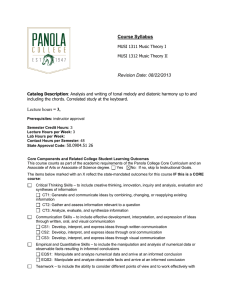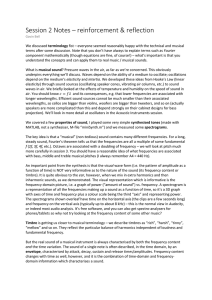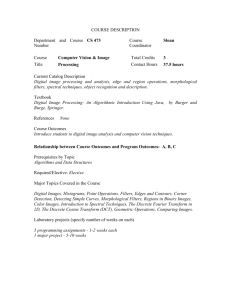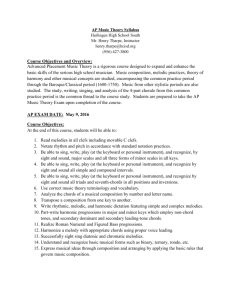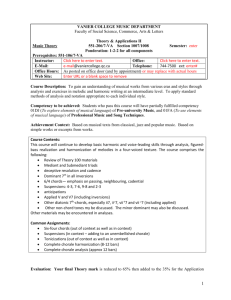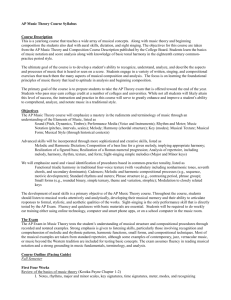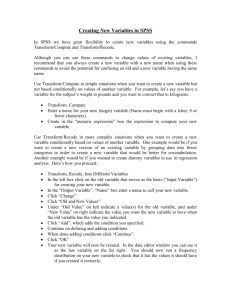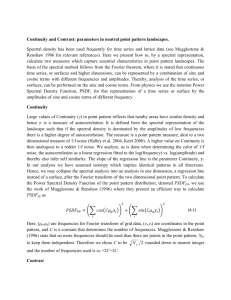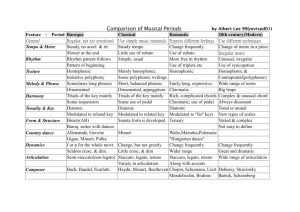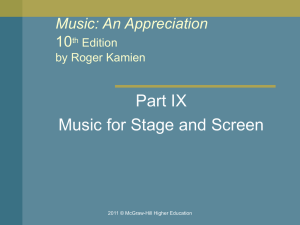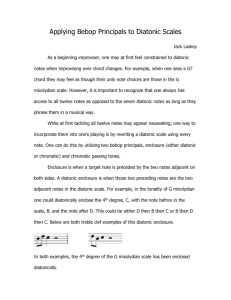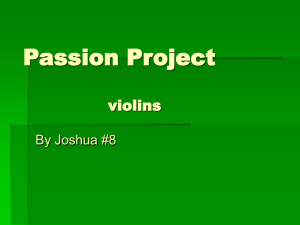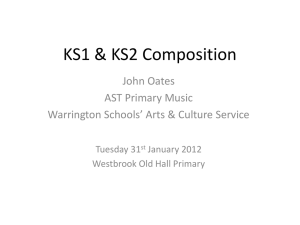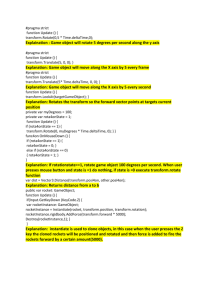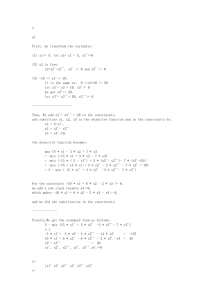Calculation of a constant Q spectral transform
advertisement
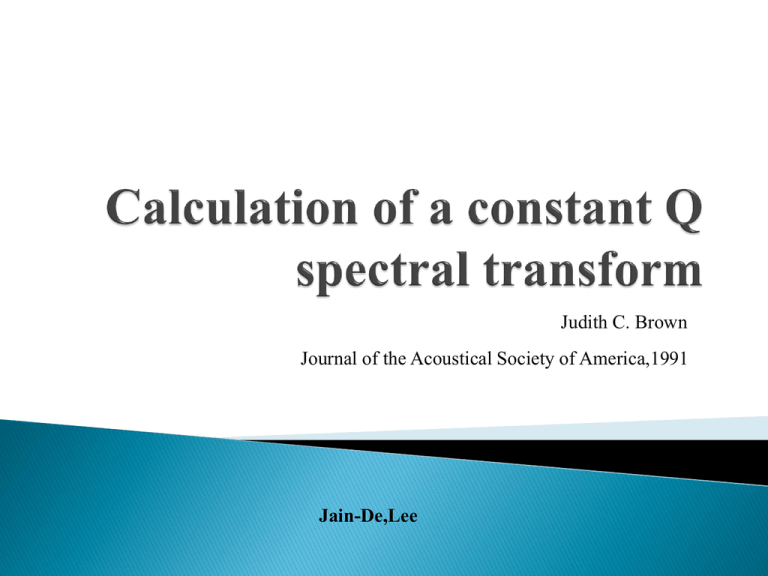
Judith C. Brown
Journal of the Acoustical Society of America,1991
Jain-De,Lee
INTRODUCTION
CALCULATION
RESULTS
SUMMARY
The work is based on the property that, for sounds
made up of harmonic frequency components
The positions of these frequency components relative
to each other are the same independent of fundamental
frequency
The conventional linear frequency representation
◦ Rise to a constant separation
◦ Harmonic components vary with fundamental frequency
The result is that it is more difficult to pick out
differences in other features
◦ Timbre
◦ Attack
◦ Decay
The log frequency representation
◦ Constant pattern for the spectral components
◦ Recognizing a previously determined pattern becomes a
straightforward problem
The idea has theoretical appeal for its similarity to
modern theories
◦ The perception of the pitch–Missing fundamental
To demonstrate the constant pattern for musical sound
◦ The mapping of these data from the linear to the logarithmic
domain
Too little information at low frequencies and too much information
at high frequencies
For example
◦ Window of 1024 samples and sampling rate of 32000
samples/s and the resolution is 31.3 Hz(32000/1024=31.25)
The violin low end of the range is G3(196Hz) and the adjacent note
is G#3(207.65 Hz),the resolution is much greater than the frequency
separation for two adjacent notes tuned
The frequencies sampled by the discrete Fourier
transform should be exponentially spaced
If we require quartertone spacing
◦ The variable resolution of at most ( 21/24 -1)= 0.03 times the
frequency
◦ A constant ratio of frequency to resolution f / δf = Q
◦ Here Q =f /0.029f= 34
Quarter-tone spacing of the equal tempered scale ,the
frequency of the k th spectral component is
fk = (21/24)k fmin
Where f
an upper frequency chosen to be below the Nyquist frequency
fmin can be chosen to be the lowest frequency about which Information
is desired
The resolution f / δf for the DFT, then the window size
must varied
For quarter-tone resolution
Q = f / δf = f / 0.029f = 34
Where the quality factor Q is defined as f / δf
bandwidth δf = f / Q
Sampling rate S = 1/T
Calculate the length of the window in frequency fk
N[k]= S / δfk = (S / fk)Q
We obtain an expression for the k th spectral
component for the constant Q transform
N 1
X [k ]
W [ n ] x[ n ] exp{ j 2 kn / N }
n0
X [k ]
1
N [k ]
N [ k ] 1
W [ k , n ] x[ n ] exp{ j 2 Qn / N [ k ]}
n0
Hamming window that has the form
W[k,n]=α + (1- α)cos(2πn/N[k])
Where α = 25/46 and 0 ≤ n ≤ N[k]-1
Constant Q transform of piano
playing
diatonic
violin
flute playing
glissando
scale
playing
from
diatonic
C4 from
(262
scale
pizzicato
to(880Hz)
C5(523
from D5
diatonic
D5(587
scale
(587
Hz)
Hz)
toHz)
C4
with
A5
(262
vibrato
Hz)from
toHz)
C5
The
G3 (196
attack
ontoD5(587
G5(784Hz)
Hz)
is also visible
(523
Hz)Hz)
with
increasing
amplitude
Straightforward method of calculating a constant Q
transform designed for musical representations
Waterfall plots of these data make it possible to
visualize information present in digitized musical
waveform
